First look: BIG’s “unzipped” Serpentine Pavilion + 4 architects reinterpret Queen Caroline’s Temple
By Justine Testado|
Wednesday, Feb 24, 2016

Related
Earlier this month, Bjarke Ingels Group got the coveted invitation to design this year's Serpentine Pavilion in London. Since the program began in 2000, the pavilion has been interpreted in a variety of architectural styles, so guessing what the next pavilion will look like is part of the fun. Over the years, the Serpentine Galleries has invited architects including Zaha Hadid, Sou Fujimoto, Jean Nouvel, Herzog & de Meuron with Ai Wei Wei, Peter Zumthor, SANAA, Smiljan Radic, and most recently, SelgasCano.
Most recently, the first renderings of BIG's Pavilion have been revealed, along with the four 25 sq.m. Summer Houses, which were added to this year's program as a response to the Queen Caroline’s Temple, a summer house built in 1734. (And if you imagined the Summer Houses actually looking like houses, think again.) With only a maximum of six months to complete their structures, the clock is already ticking for the architects.
Scroll down for a glimpse of their designs.

In their statement, BIG attempted to create a structure that "embodies multiple architectural aspects that are often perceved as opposites: a structure that is free-form yet rigorous, modular yet sculptural, both transparents and opaque, both solid box and blob." The pavilion is a reintepretation of the brick wall, featuring stacked fiberglass frames that is then "unzipped" to form an inner cavity within.

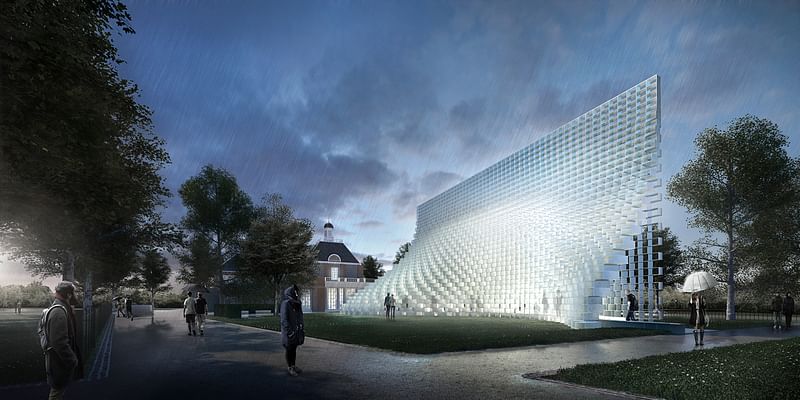
Featuring wooden floors and extruded Fiberline profiles, the interior is "a complex three-dimensional environment [that] can be explored and experienced in a variety of ways, inside and outside", BIG describes. Starting from the top, the wall first appears like a straight line, and then is turned into a valley at the entrance of the Pavilion, with an undulating hillside towards the Park.
SERPENTINE SUMMER HOUSES
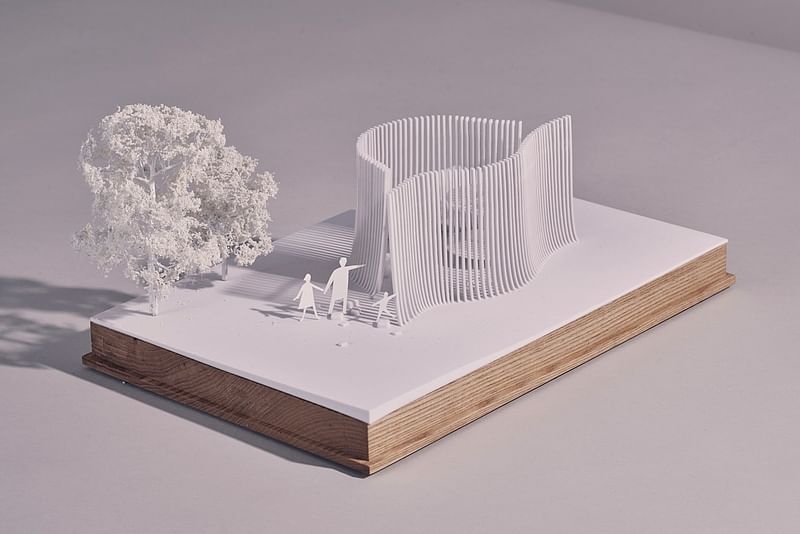

Asif Khan takes a poetic, what-could've-been turn in his design, which intends to create new dialogue with the original Queen Caroline's temple and its landscape surroundings. Khan's Summer House is a circular form of which its circumference "has been unpeeled to connect us and the Temple to a picturesque moment left hidden by William Kent almost 300 years ago," he states. Using sun path analysis, Khan realized that Kent aligned the Temple toward the direction of the rising sun on March 1, 1683 — Queen Caroline's birthday. Khan writes that this effect could've been amplified if the lake wasn't obscured by John Rennie's 1826 bridge. According to Khan, the lake could've acted like a landscape-sized mirror that would reflect the sun.
Khan's Summer House proposal builds upon this "lost moment". The structure features an enfilade of three "rooms" based on that of the original Temple. The rooms are then articulated by an undulating line of timber staves to create enclosure and direct views, and the ground is a continuous gravel landscape punctuated by stepping stones. "As the structure meets the gravel, it gently blends the horizontal and vertical, to appear as if the Summer House might have grown out of the ground," Khan writes.
Barkow Leibinger


Barkow Leibinger took inspiration from a now-extinct summer house designed by William Kent, the architect of Queen Caroline's Temple. Built on a nearby manmade mountain constructed from the dredging of Long Water, this former summer house offered panoramic views of the Park. "With this absent structure in mind, we have designed a Summer House in-the-round. Standing free with all its sides visible, and conceived as a series of undulating structural bands, it is reminiscent of a blind contour drawing (a drawing executed without lifting the pencil up from the paper and only looking at the subject)," Barkow Leibinger states. "The logic of generating a structure from loops is a self-generating one and comes from the idea of coiling material in your hands then stacking the coils upon each other. The horizontal banding recalls the layered coursing of Queen Caroline's Temple, despite its idiosyncratic nature."
Kunlé Adeyemi — NLÉ
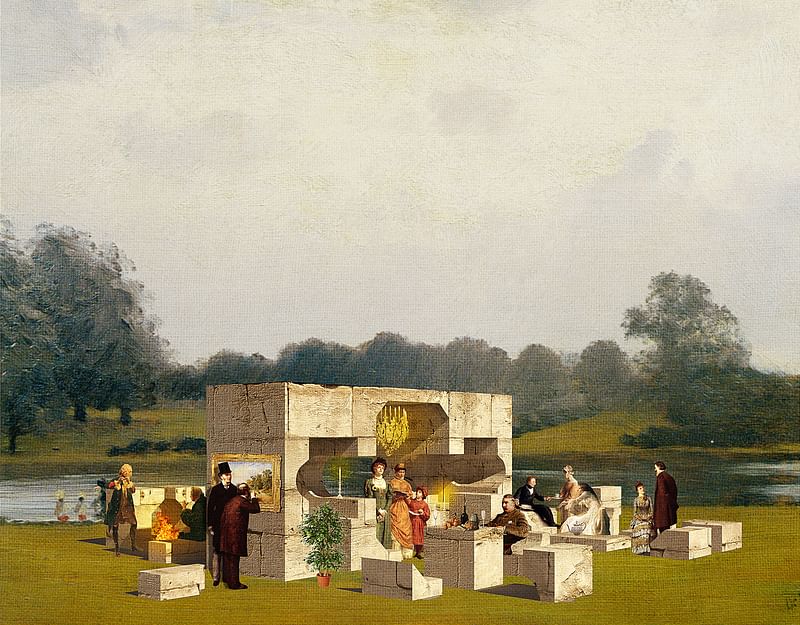
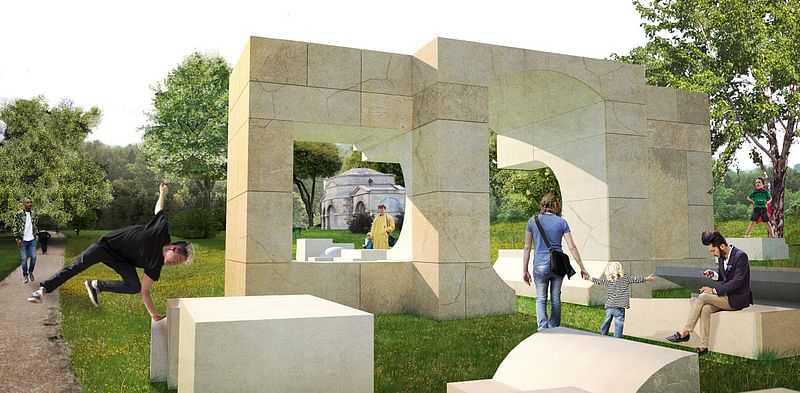
Kunlé Adeyemi of NLÉ plays on the basic function of a summer house: a space for shelter and relaxation. As a tribute to Queen Caroline's Temple, their design is an "inverse replica" and "recomposed into a bold new sculptural object". "By rotating the Temple's interior void space, we expose the structure's neo-classical plan, proportions and architectural form. Using prefabricated building blocks assembled from sandstone similar to the ones used to build the Temple, our abstracted forms come together to create a room, a doorway, and a window for people to interact with the building, the environment and with one another," NLÉ states. "The carved out void, soft interior and fragmented furniture blocks create comfortable spaces for people to eat, rest, or play."
Yona Friedman
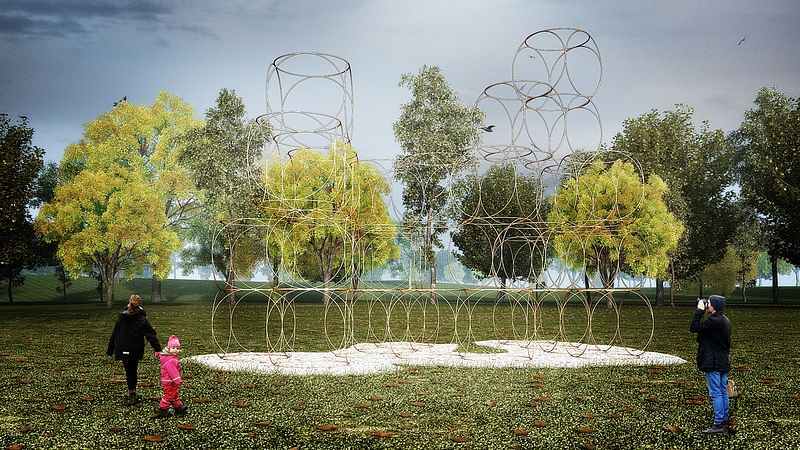

Yona Friedman's Summer House is a continuation of his La Ville Spatiale (Spatial City) project that he began in the late 1950s. The project's 1959 manifesto is based on two principles: "firstly: a mobile architecture that could create an elevated city space and enable the growth of cities while restraining the use of land; secondly, the use of modular structures to allow people to live in housing of their own design.," Friedman states. Featuring his signature 'space-chain' structural style, Friedman's Serpentine Summer House "constitutes a fragment of a larger grid structure, originally conceived in La Ville Spatiale. It is a modular structure that can be disassembled and assembled in different formations and compositions."

Share
0 Comments
Comment as :